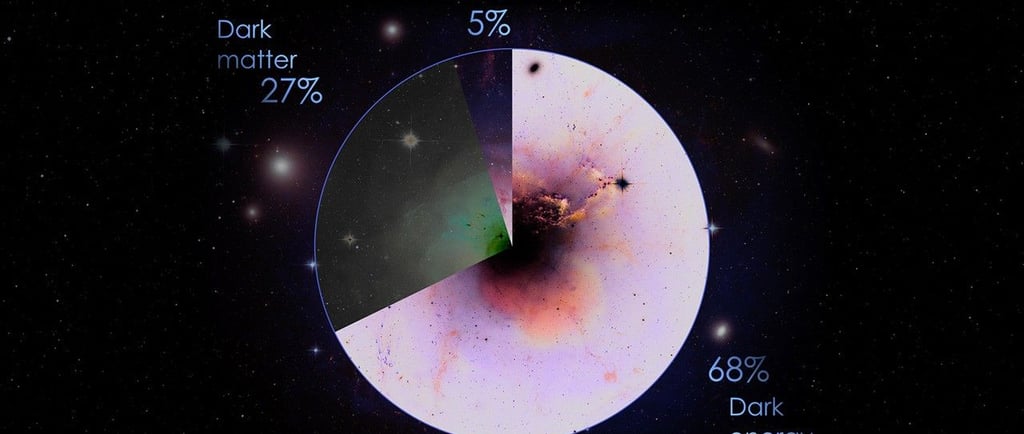The Substances of the Cosmos: Dark Matter and Dark Energy


Understanding Matter
To grasp the complexities of the universe, it is vital to define what matter is. Matter is any substance that possesses mass and occupies space, existing in various states such as gas, solid, liquid, or plasma. Normal matter, which constitutes less than 5% of the total universe, forms the visible components of the cosmos we interact with daily, from stars and planets to gases and solids.
Dark Matter: The Invisible Enigma
In stark contrast to normal matter is dark matter, which comprises approximately 27% of the universe. Unlike normal matter, which readily interacts with electromagnetic forces allowing it to be seen, dark matter remains elusive and undetectable by conventional means. Scientists theorize that dark matter consists of unidentified particles that rarely engage with normal matter. These particles do not emit, absorb, or reflect light, rendering them invisible. The effects of dark matter, however, are evidenced through their gravitational influence, reshaping galaxies and the large-scale structure of the universe.
The Role of Dark Energy
Perhaps even more enigmatic than dark matter is dark energy, which is believed to account for about 68% of the universe's total energy density. Dark energy surfaced as a necessary explanation for the observed accelerated expansion of the universe. Despite its dominance in the universe’s makeup, our understanding of dark energy is significantly less than that of dark matter. The quest to uncover the nature of dark energy is ongoing, with scientists striving to understand how it impacts the dynamics of cosmic expansion.
The interplay between these two cosmic phenomena—dark matter and dark energy—illustrates just how little we know about the universe at large. While we have a foundational understanding of normal matter, much of the universe remains a mystery that beckons for exploration and deepened scientific inquiry. The pursuit of knowledge about dark matter and dark energy not only enhances our comprehension of cosmic structure and evolution but also elevates our broader understanding of physical laws governing the universe.
